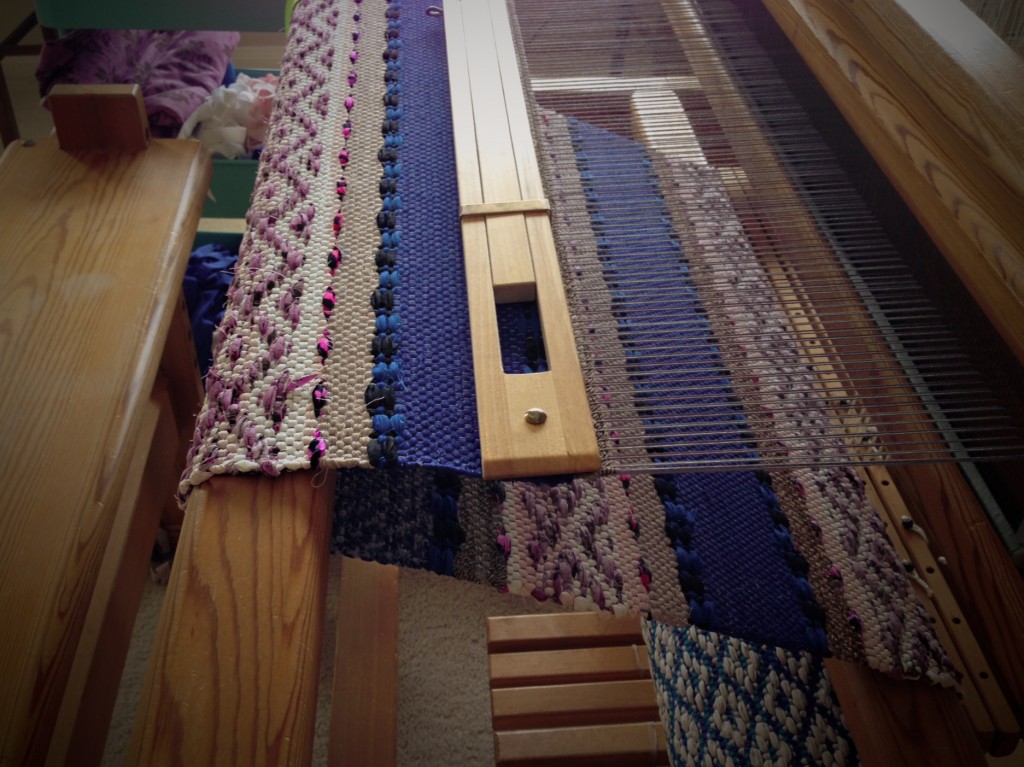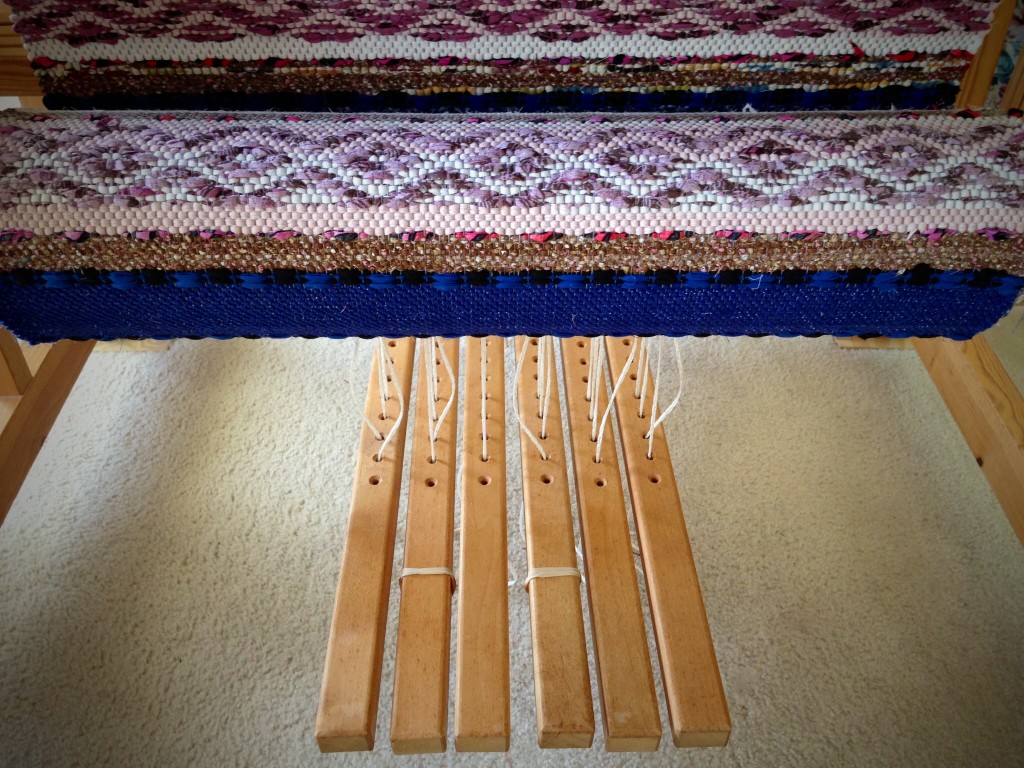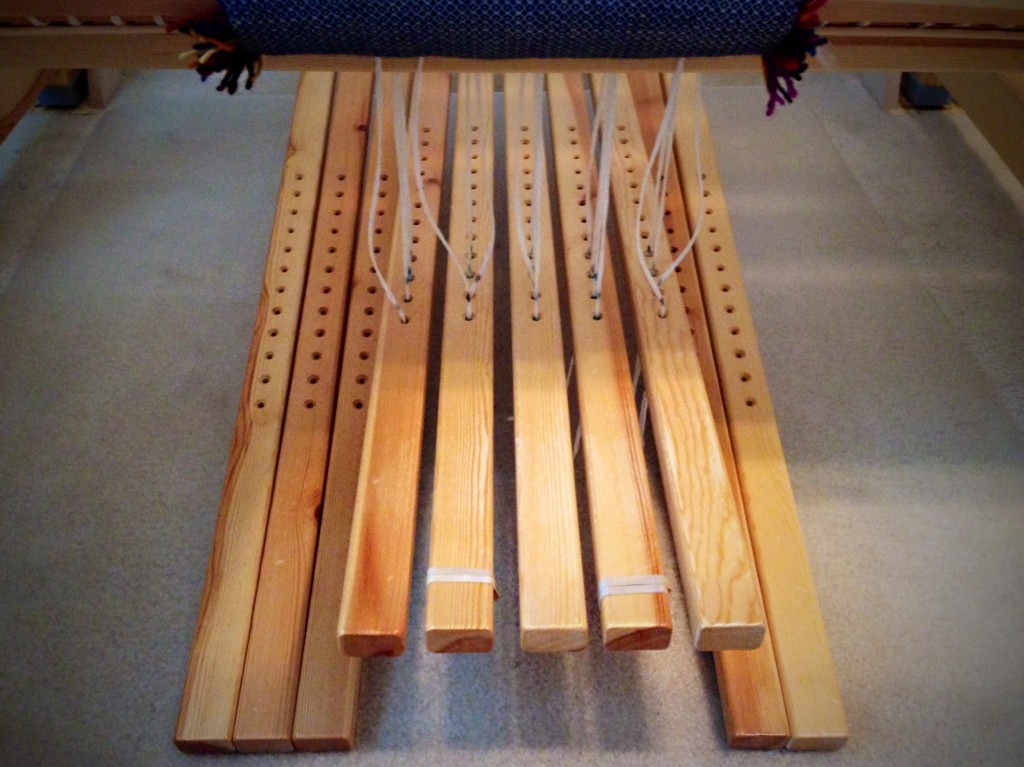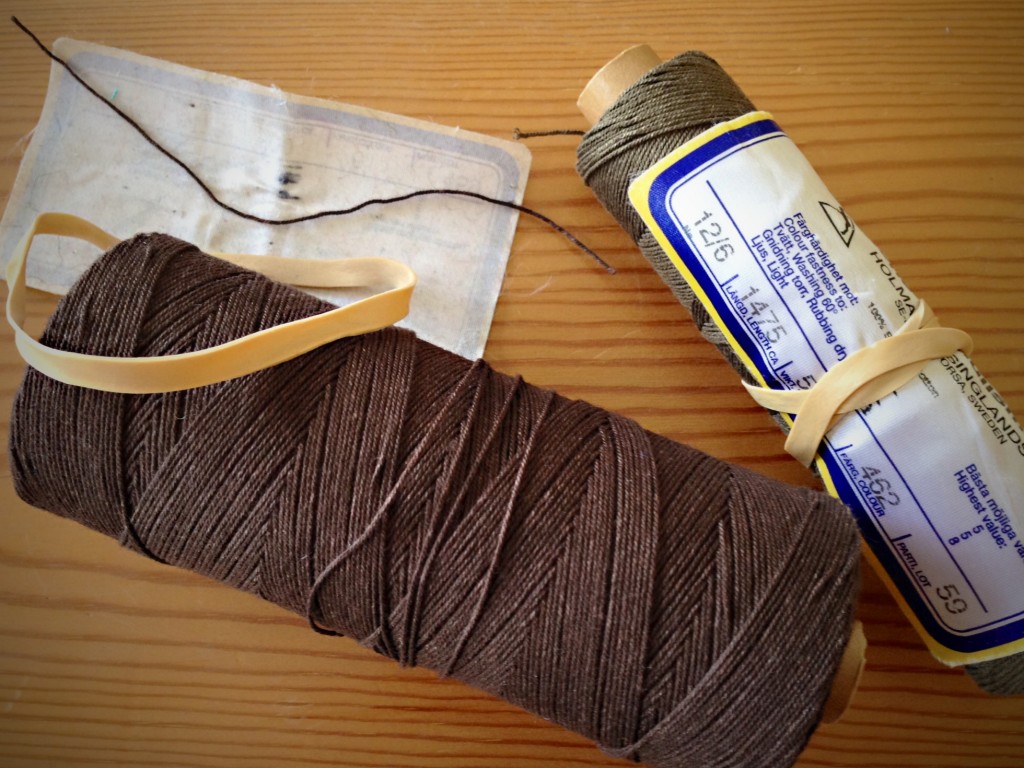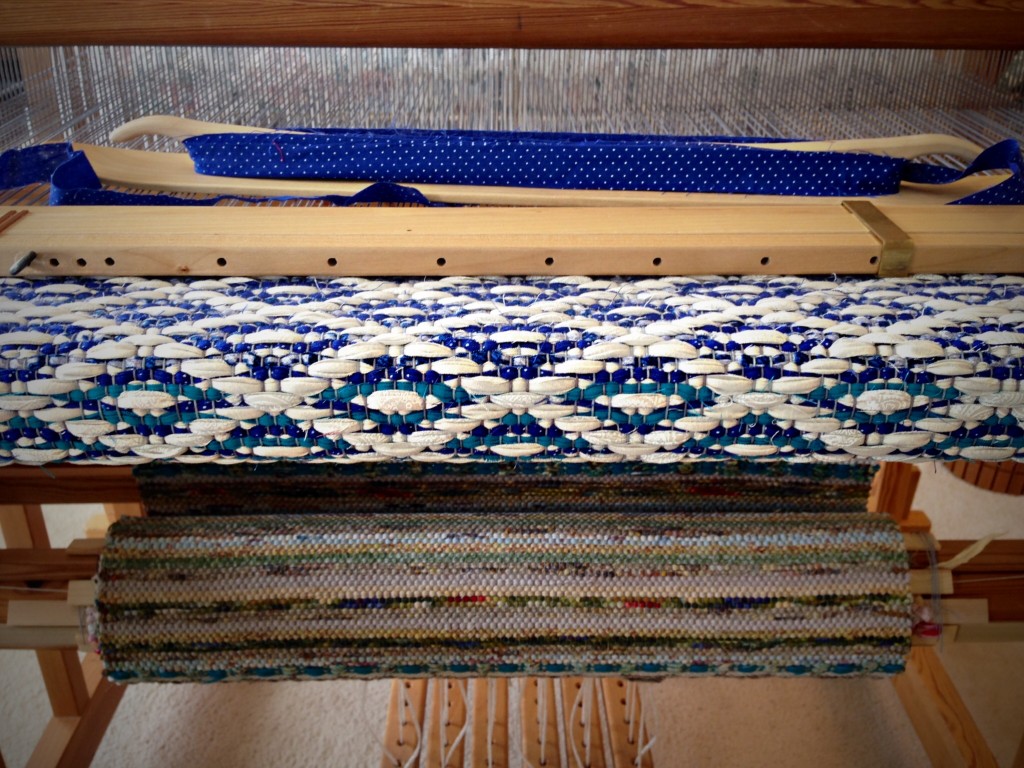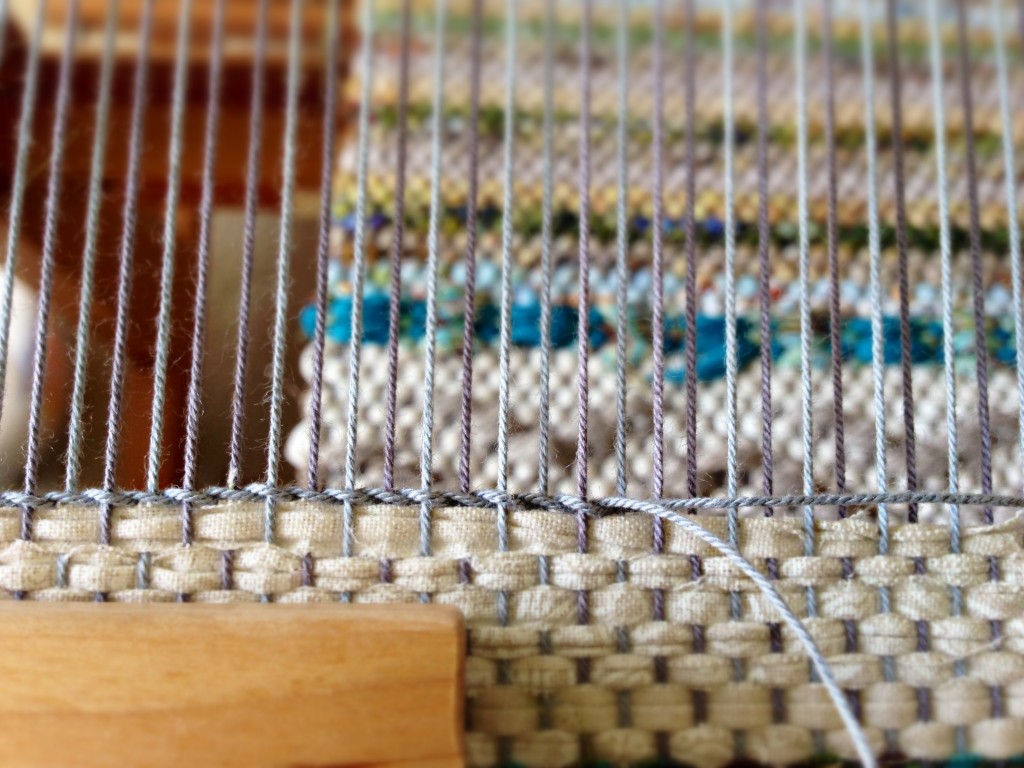The goal is to weave a firm selvedge on a rag rug. This is especially challenging when the weave changes, like it does with this rug. Plain weave in a single color, a lone weft in a contrasting color, rosepath with tabby in between, and plain weave with alternating colors. It helps to have a few guiding principles.
A few guidelines for weaving firm rag rug selvedges:
1. Make sure the weft going into the shed catches the outermost warp end. If needed, manipulate the outermost warp end up or down to make this happen.
2. When using two shuttles, start the second shuttle going in the same direction as the first shuttle.
3. When using two shuttles, be sure to catch the “idle” weft at the selvedge by crossing over or under it with the “working” weft.
4. Turn the fabric strip under twice at the selvedge.
5. Pull the weft snug at the selvedge. (A tight warp tension helps with this.)
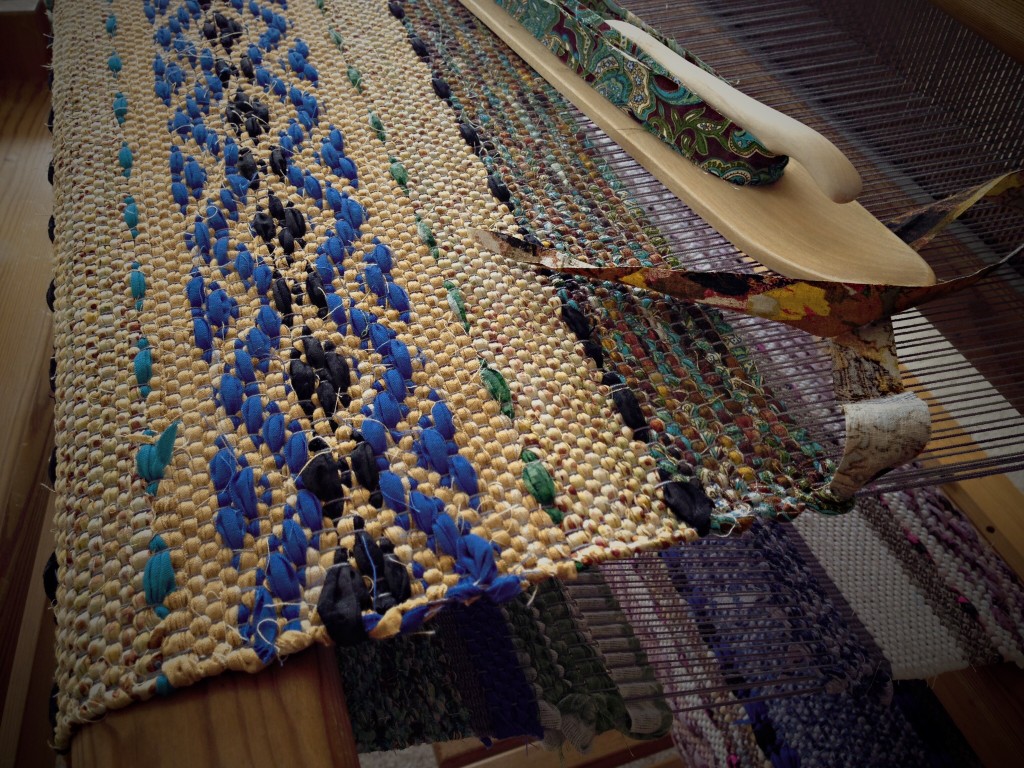
I can handle any rag rug selvedge if I pay attention to these guidelines. Similarly, are there guiding principles that help us maneuver the daily challenges of life?
Following God’s ways gives needed structure to our days on this earth. His faithful guidance is that of a loving father. By practicing his principles we can be mentally prepared for action, emotionally stable, and spiritually focused. And we find we are well able to handle all of life’s twists and turns.
May you meet your challenges with success.
On purpose,
Karen

